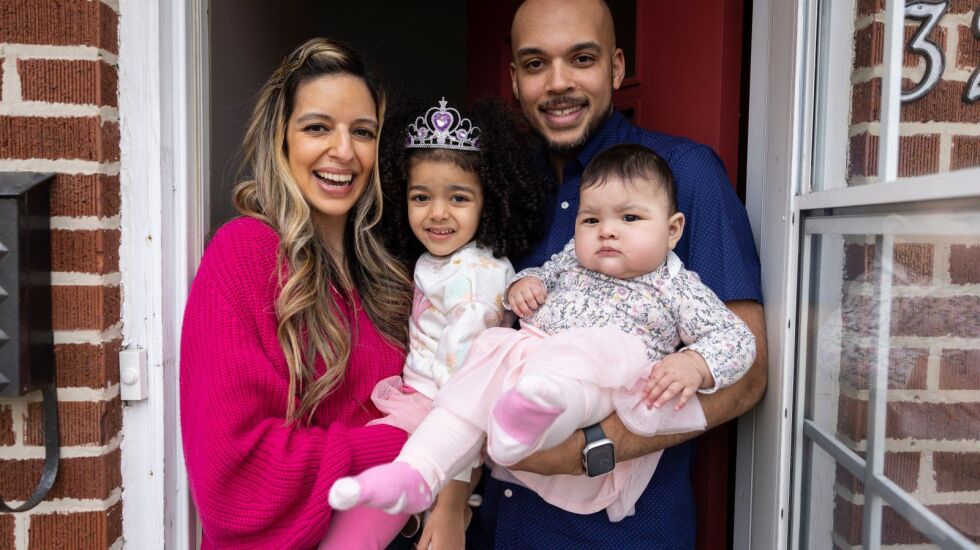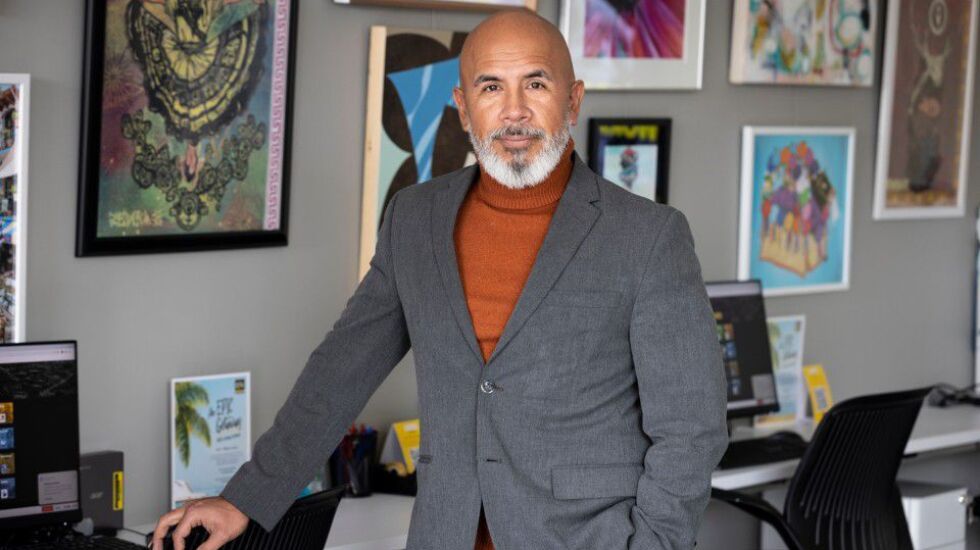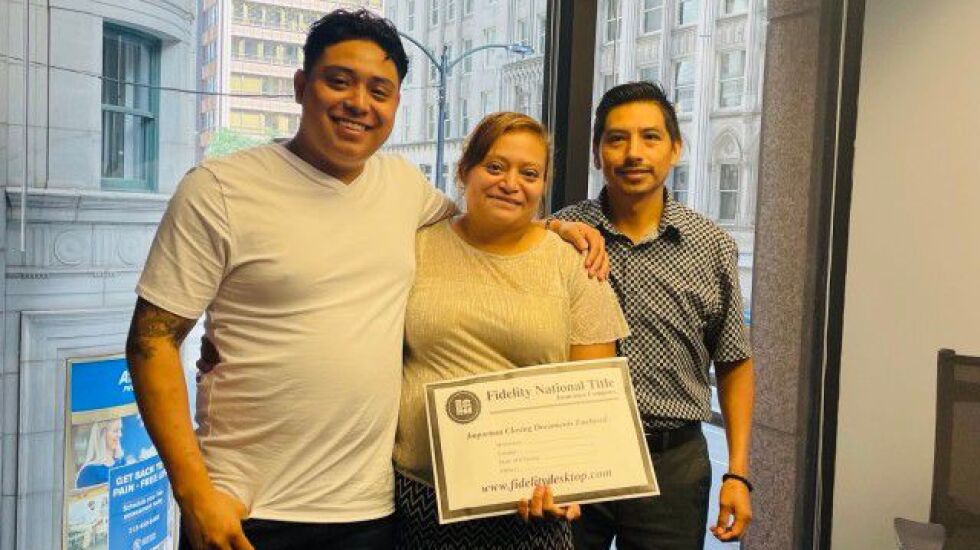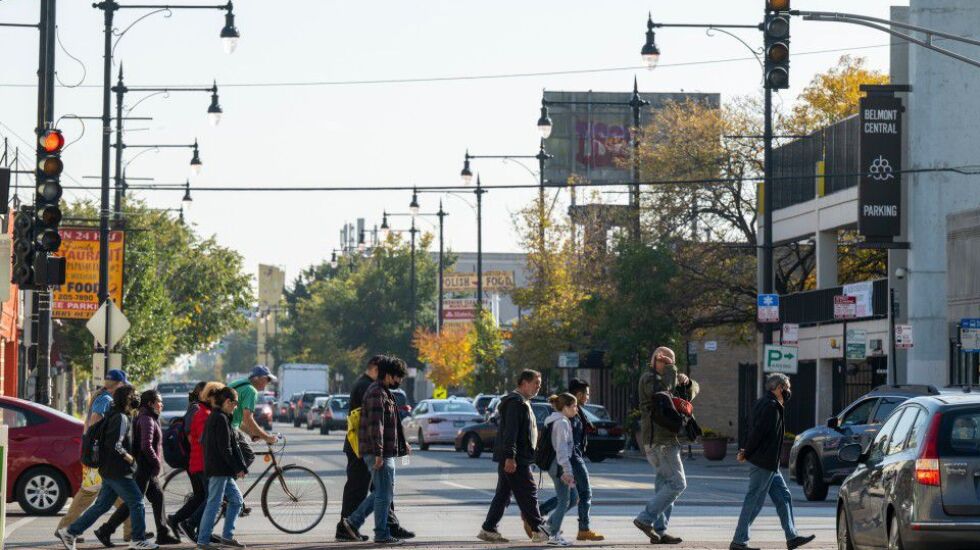
Aurea Diaz and Adrian Maldonado recently bought their first home in the city’s Back of the Yards neighborhood. The Gonzalez family just became first-time homeowners, too, after looking beyond the city’s Northwest Side to the near western suburbs.
These Latino home buyers aren’t just first-timers. They are first-in-their-generation purchasers motivated to take the plunge, despite headwinds like high mortgage rates and low supply that have made other buyers skittish.
What’s driving them is a combination of factors that the real estate industry is closely watching. Anecdotally, there appears to be some payoff to a newer spate of specialized lending programs and mortgage-prep courses aimed at stoking homeownership among Black and Latino Chicagoans.

But if those programs laid the groundwork for these families, rising rents sealed the deal. In Chicago, the mean of listed rents was $1,983 at the end of February, a 7% jump from a year prior, according to data from Zillow.
The Gonzalez family, for example, felt they didn’t have much choice after the owner of their Belmont-Cragin apartment building sold to a new property management company at the end of 2022. Rents were about to go up by $500 a month.
“We would have been paying $2,200 per month or more,” said Natasha Roman-Gonzalez. “That put us over the edge.”
Studying up on homeownership
Aurea Diaz and Adrian Maldonado have been together for 26 years and immigrated together from Mexico. They started renting a three-bedroom basement apartment in Little Village for $750 a month a decade ago. But by 2022, rent had climbed to about $1,000 a month.
Diaz, a factory laborer, and Maldonado, a restaurant cook, wanted more space for themselves and three of their four children who still live with them, ranging in age from 12 to 25.
They had also been studying up on homeownership: For two years, the pair attended free, first-time homebuyer education classes through the Resurrection Project, a housing counseling organization in Pilsen.

The program is one of several in the city aimed at addressing a legacy of segregation. But change has been slow to come: From 2011 to 2021, the percentage of Chicago homeowners who identify as Latino barely budged from 19% to 22%, according to the U.S. Census Bureau’s American Community Survey.
Programs like Full Circle Homes are aimed at improving those statistics. Through the Resurrection Project, the couple was pre-approved for a loan from a partner credit union and qualified for a $20,000 grant.
The grant is available to new homebuyers in Chicago Lawn, North Lawndale and Back of the Yards, and is forgiven if the buyers stay in their homes for at least five years.
The Resurrection Project also provides affordable homes for rent and for sale. Once the couple started looking, they had to act quickly.
They made their winning offer of $229,500 while they were still at the open house visit, eyeing a long line of other potential buyers.
“We knew there was no time to waste,” Diaz said.
They made a 10% down payment and incurred no PMI because they took the lender’s portfolio loan product. Their monthly mortgage, at a 7.1 percent interest rate, is $1,550.
Diaz’s advice to other would-be homeowners? “Get informed,” she said. “Take a leap of faith.”
Finding it cheaper to move west
When Adrian Gonzalez and Natasha Roman-Gonzalez looked to buy a house in their neighborhood, they worried that staying in Belmont-Cragin would be too expensive of a proposition. The median price of a single-family home has gone up in Belmont-Cragin, from $265,000 in January 2020 to $330,000 in January 2023, according to Midwest Real Estate Data, or MRED.
When they started looking, the Gonzalez family were parents to Cayden, who is now 3, and there was a baby on the way.
“Our search for our home was focused around school districts and property taxes,” Roman-Gonzalez said. “We looked at surrounding neighborhoods, and Franklin Park” – in the near west suburbs, south of O’Hare International Airport – ended up checking all of the boxes on our checklist,” she said.
They found a four-bedroom, two-bath 1,376-square-foot home.
But the house had seven bids, and Roman-Gonzalez was pregnant with Rylan, now 7 months old.
“If it’s the right home that fits people’s lifestyle, and it’s in a sought-after location, it can get multiple offers the first day,” says Sarah Jaffe, a real estate broker with Baird & Warner.
“We were biting our nails,” said Roman-Gonzalez. “It came down to us and another person who had out-bid us by $5,000. The lady who owned the house, who had raised her children there, accepted our bid.”
They paid $330,000, put down 3 percent and got a 30-year mortgage at a 5.5 percent interest rate. Their lender also required them to take out private mortgage insurance, bringing the monthly mortgage payment to $2,486.
The couple feels grateful that they can afford the mortgage and afford for Adrian Gonzalez to stay home with their daughters. He had been a quality-control technician for a company that closed its Chicago operations in May 2021.
“We didn’t grow up in a house [that their parents owned], so to be able to give our daughters this experience is very special,” said Roman-Gonzalez.
Refusing to settle
A different first-time homebuyers’ workshop, this one from Northwest Center, motivated prospective buyer Samuel Morales to start looking. The two-part, eight-hour group course outlined the home buying process, from building credit to getting that first set of keys.
Morales, who lives in a Brighton Park apartment, pays $1,200 a month. He and his family have rented for 10 years, and they’ve been watching as rent prices in Brighton Park jump to $1,800 for many families.
“If we could come up with another $600 a month, that’s our goal for a mortgage,” said Morales, the sole wage-earner.
He and his wife have been searching since late November in and around the western and southern suburbs, including Alsip, Oak Park and Palos Heights.
They are looking for a house with accommodations for their 11-year-old son, Samuel Jr., who has spina bifida and requires a wheelchair. That includes a ramp, walk-in shower, wider-than-normal doorways and either an indoor elevator or ramp.
Locally, Latino home seekers have been struggling with scarce housing inventory that is affordable on household incomes that are typically less than $120,000 a year, said James Salazar, a Realtor who serves as the director of growth and development at Baird & Warner.
“Often, [Latino families] have to settle because they cannot find anything in their price points without going far from their work and sacrificing their employment,” Salazar said.

Freelancer Sandra Guy wrote this story for WBEZ.







